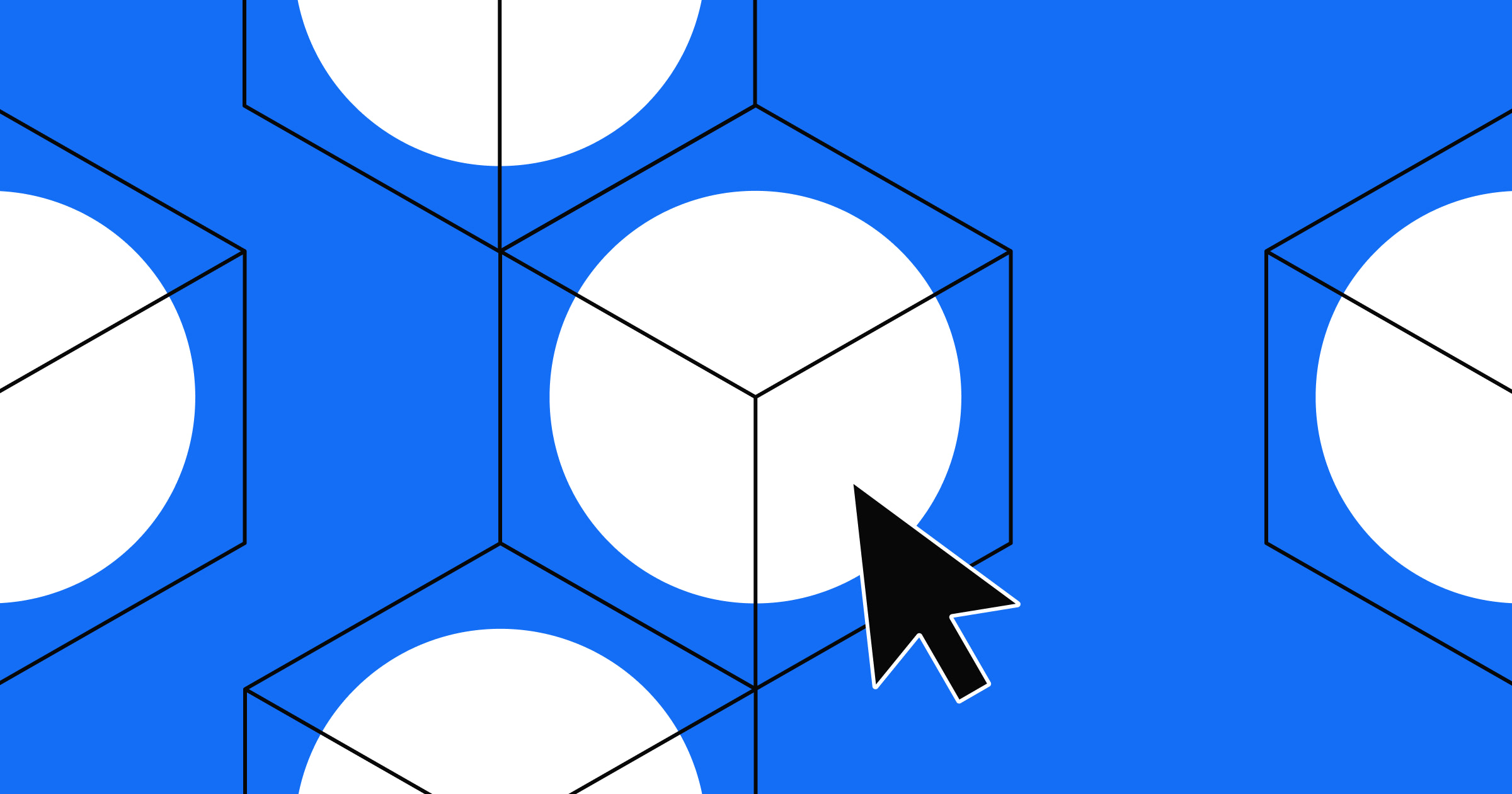Making great products is one thing — but you’ll need solid brand differentiation to sell them.
Succeeding in the marketplace of ideas is about more than developing great products. You also need unique branding that makes a lasting impression on your audience. Even the best services will fail or get overshadowed if their brand isn't memorable or distinctive. That's why crafting a strong company identity that differentiates your organization from the rest is essential.
Fortunately, you can make a positive impression through effective brand differentiation strategies, such as creating recognizable logos and catering to a niche market. Here, we’ll explore examples of differentiation strategies to help you find the best one for your company.
The importance of brand differentiation
Brand differentiation involves setting yourself apart from competitors and standing out in a customer’s mind throughout the buying journey. By displaying your brand’s unique value from the first impression — typically via design elements like your logo and website — you’ll be front of mind when your customers make purchasing decisions.
Take Dyson, for example. Dyson is a vacuum cleaner manufacturer that prioritizes cutting-edge technology and sleek designs over affordability. Their vacuums are often the most expensive on the market, but they’re also durable, modern, and colorful. When you think of a modern vacuum, chances are you think of a Dyson first. They’ve developed a brand identity that positions them as the industry leader, with less expensive options seeming like downgrades.
Brand identity vs. brand image
Your brand identity is a culmination of characteristics you portray through your marketing efforts. For example, most brands aim to project traits like trustworthiness, reliability, and convenience. You’ll use branded designs and communication language to build this identity.
Your brand image, on the other hand, is how customers actually interpret your message — which isn’t always how you want them to.
You need to align your brand identity and brand image so your marketing conveys a consistent, accurate message. When these two components are at odds, you might mislead customers and fail to meet expectations.
For example, Uber struggled with brand image early on. Their primary differentiation from taxi cabs was lower pricing. But their sleek brand design denoted a luxury appeal. The brand identity was affordability, but the image was more akin to a chauffeur company. When Lyft came along with the same value proposition but a more approachable image, it took a significant chunk of Uber's business.
Assessing your brand differentiation
How you'll differentiate your brand depends on your positioning and offerings. To find the right differentiation strategy for your brand, consider the following questions about your company:
- What do we sell? Investigate what sets your products apart from competitors. These are brand differentiations you can highlight.
- Who do we sell to? Research your target audience to surface clues about their needs and the value propositions that resonate with them.
- What makes our company unique? Aside from your brand, identify something about how your company does business differently than competitors. For example, what made you want to work there?
- Why do we do it? Dig into your company’s origin story and motivations to discover any engaging stories about its driving purpose. Use this information to develop a mission statement that tells a compelling story, one you can express throughout your design elements and marketing materials.



















The future of marketing is now
Thought leaders from Silversmith, Accel and Webflow discuss the current and future impact of artificial intelligence on the marketing landscape
5 brand identity techniques
After your initial brand identity assessment, review your company's current brand positioning and apply these five differentiation strategies.
1. Research your audience
Invest time into thoroughly understanding your audience. Circulate user surveys, invite customers to focus groups, and conduct interviews to learn what your customers need and value. Then, brainstorm ways to leverage that information for a competitive advantage in your market segment.
For example, your research might show that customers are dissatisfied with the price point of most products in this industry. You might decide to offer a lower price point than most and highlight this value proposition in your website design.
Pro tip: Ask your audience what branding elements they remember most from your current designs, like your logo or website colors. Use this information to build on elements that already stand out.
2. Explore your brand's history
Dig into the stories behind your brand’s evolution to reveal any interesting facts. Perhaps there's an entertaining backstory about how the company came to be or a fascinating tale about how the first product was developed. Look for themes your audience can empathize with, like overcoming obstacles or learning from failure. You can use these stories in your advertisements for a relatable and human touch.
Pro tip: Interview executives and employees who were around when the company started. Chances are they have some interesting stories and context to share.
3. Buck the trends
Over the last decade, brands have slowly converged and started to appear more homogeneous. You can see this in typography, colors, and logos. Most brands favor sans-serif fonts, monochrome color palettes, and simple line-drawing logos. The market is ripe for brands with distinct designs. Find opportunities to create aesthetics that don't resemble your competitors.
Pro tip: Check out design studio websites, like Mammoth or Pancake, for inspiration. Design studios often create the most innovative designs in their industry, so the most cutting-edge branding ideas often begin on these sites.
4. Provide outstanding customer experiences
Customers connect with brands that offer a human touch. Brands cultivate this dynamic by providing helpful support and reliable services. But you can take customer care even further with tangible resources consumers can use to solve problems independently.
These resources could include creating video tutorials and troubleshooting guides and offering them for free with your products. Find every opportunity to add these additional resources to your website and marketing materials. Make sure all content reflects your brand identity to further promote brand recognition and awareness.
Pro tip: Assess a few test cases, like a technical problem, delivery issue, or shopping experience. Then, explore how a customer could navigate these situations. Look for any problems in the experience — and make a plan to correct those issues.
5. Maintain uniform brand communication
The more consistent your brand message is, the more easily your audience will internalize it. Design all your advertisements, customer experiences, and communications to further your messaging without confusing it. You'll need to partner with copywriters, designers, developers, and the support team to develop consistent experiences that resonate with your ideal brand identity.
Pro tip: Make a style guide that details clear rules about how your branding works and how to craft communications. Routinely audit customer-facing experiences to ensure consistency.
Strong brand identity examples
You shouldn’t copy other brands, but you can learn from other companies without mimicking them. Explore how some stand-out brands have set themselves apart from the competition.
CLIF bar
In 1992, Gary Erickson, the founder of CLIF bar, decided to make more appetizing energy bars than what was available at the time. CLIF combined product differentiation with stand-out packaging designs and a commitment to sustainability and integrity, and the company sold for $2.9 billion in 2022.
Larian Studios
Larian Studios is a Belgian game studio founded in 1996 by Swen Vincke. The company’s most recent game, Baldur's Gate 3, stands out for its customer-centric and visually stunning experience. Larian made a fantastic product without following negative trends in the gaming industry: chasing trends, overpromising, or cyclically laying off developers.
Trader Joe's
Trader Joe's has been offering a unique shopping experience since 1967. These days, most grocery stores look virtually identical, but Trader Joe's has a distinct aesthetic and a commitment to offering exciting products at low prices. They don't use coupons or run-of-the-mill loyalty programs to encourage brand loyalty. Instead, they focus on building good relationships with their communities. For example, they have a program called Neighborhood Shares, where they donate 100% of unsold products to a network of local nonprofits.
Rivian
Rivian makes large electric vehicles, like pickup trucks and SUVs. In their early days, the company quickly established a strong brand identity.
Rivian initially differentiated themselves by offering novel features, like additional storage compartments and driving assistance. Their boldly distinct car design harmonizes well with the brand’s focus on luxury and class, with a pricing strategy that matches their market segment.
While Rivian’s solid positioning sets them up for success, their brand performance will depend upon their ability to maintain their luxurious branding as they scale.
The power of standing out
To build a brand that stands the test of time and increase brand awareness, you need to create a consistent online presence. That’s where Webflow can help.
Craft a compelling website that reflects your brand with Webflow, which enables your marketing teams to create powerful web experiences visually — without relying on developers. Build compelling content at scale using a visual-first, composable CMS. Then use Webflow’s app integrations to access analytics tools that monitor whether your website experiences resonate with your audience.

Webflow Enterprise
Trusted by over 300,000 of the world’s leading brands, Webflow Enterprise empowers your team to visually build, manage, and optimize sophisticated web experiences at scale — all backed by enterprise-grade security.































